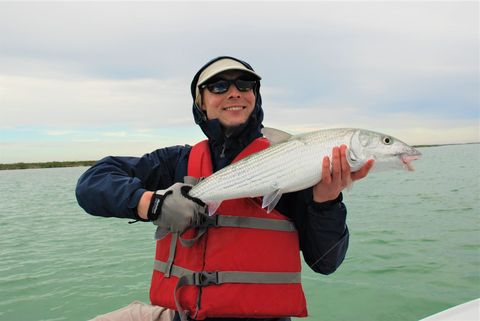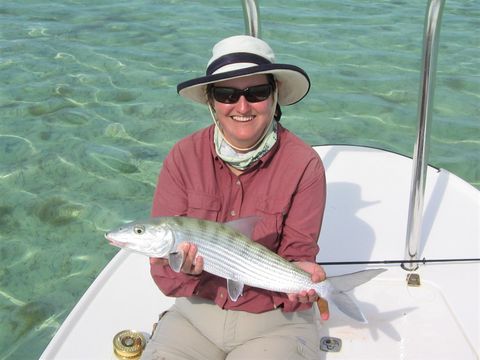
Bahamas

The Bahamas, officially the Commonwealth of the Bahamas, is an island country of the Lucayan Archipelago consisting of a group of about 700 islands, atolls, cayes and islets in the western Atlantic Ocean, of which only between 30 and 40 are inhabited. Located north of Cuba and Hispanola (Haiti and the Dominican Republic); northwest of the Turks and Caicos Islands; southeast of the U.S. state of Florida and east of the Florida Keys. Its capital is Nassau on the island of New Providence. The designation of Bahamas
can refer to either the country or the larger island chain that it shares with the Turks and Caicos Islands. The total land and freshwater area of the Bahamas is 13,880 square kilometres (5,359 square miles). However, the Bahamas territory encompasses 470,000 square kilometres (180,000 square miles) of ocean space.
The closest Bahamian island to the United States in Bimini, which is also known as the gateway to the Bahamas. The island of Abaco is to the east of Grand Bahama. The southeastern most island is Inagua. The largest island is Andros Island. Other inhabited islands include Eleuthera, Cat Island, Long Island, San Salvador Island, Acklins, Crooked Island, Exuma and Mayaguana. Nassau, capital city of the Bahamas, lies on the island of New Providence.
The Bahamas has an estimated population of 382,825 people. The official language of the Bahamas is English; however, many residents speak the Bahamian dialect. According to recent statistics over 98% of the adult population is literate.
All the islands are low and flat, with ridges that usually rise no more than 15 to 20 metres (49 to 66 feet). The highest point in the country is Mount Alvernia (formerly Como Hill) on Cat Island. It has an elevation of 63 metres (207 feet).
Originally inhabited by the Lucayan, a branch of the Arawakan-speaking Taino people, the Bahamas were the site of Columbus' first landfall in the New World in 1492. Although the Spanish never colonized the Bahamas, they shipped the native Lucayans to slavery in Hispaniola. The islands were mostly deserted from 1513 until 1648, when English colonists from Bermuda settled on the island of Eleuthera.
The Bahamas became a British Crown colony in 1718, when the British clamped down on piracy. After the American War of Independence, the Crown resettled thousands of American Loyalists in the Bahamas; they brought their slaves with them and established plantations on land grants. Africans constituted the majority of the population from this period. The Bahamas became a haven for freed African slaves; the Royal Navy resettled Africans, liberated from illegal slave ships, here; American slaves and Seminoles escaped here from Florida; and the government feed American slaves carried on U.S. domestic ships that had reached the Bahamas due to bad weather. Slavery in the Bahamas was abolished in 1834. Today the descendants of slaves and free Africans make up nearly 90% of the population.
The Bahamas became an independent Commonwealth realm in 1973, retaining Queen Elizabeth II as its monarch. In terms of gross domestic product per capita, the Bahamas is one of the richest countries in the Americas (following the United States and Canada). Its economy is based on tourism and finance.
The islands of the Bahamas have a tropical climate, moderated by the Gulf Stream. As such, there has never been a frost or freeze reported in the Bahamas, although every few decades low temperatures can fall into the 3-5°C (37-41°F) range for a few hours when a severe cold outbreak comes off the North American landmass. Otherwise, the low latitude, warm tropical Gulf Stream and low elevation give the Bahamas a warm and winterless climate. There is only an 8°C difference between the warmest month and coolest month of the Bahamian islands. As with most tropical climates, seasonal rainfall follows the sun and summer is the wettest season. The Bahamas are often sunny and dry for long periods of time and average more than 3,000 hours or 340 days of sunlight annually.
The Bahamas, a chain of islands with limited large open space, is unable to support animals of great size on land. However, the fauna remains diverse and unique in land and sea. On land, various species of amphibians exist like the Cuban tree frog as well as reptiles including turtles, Bahamian boa constrictor, pygmy boa and blind worm snake. There are no poisonous snakes on the islands. There are also different kinds of lizards, including iguanas and curly tailed lizards. About 230 species of birds migrate to or live in the Bahamas islands. They include the Bahama parrot, Bahama wood star, hummingbird, woodpecker and West Indian flamingo. Other interesting birds include the great blue heron, barn owl, peregrine falcon and Bahama duck. It is thought that only 13 species of mammals are native in the islands, of which 12 are bats. The other is the hutia, a rodent-like animal. There are also numerous populations of non-native species such as feral pigs, donkeys, goats, raccoons and Abaco wilds horses.
The flora in the Bahamas is similar to that of Florida and Cuba. Native trees include Lignum vitae, mahogany, Caribbean pine, candlewood, red cedar and more. Native species are also shrubs like cascarilla, strongback or yellow elder, as well as mangroves and various kinds of palms.
Bahamas culture is rich with beliefs, traditions, folklore and legend. Junkanoo is a traditional Afro-Bahamian street parade of 'rushing' music, dance and art held in Nassau (and a few other settlements) every Boxing Day and New Year's Day. Junkanoo is also used to celebrate other holidays and events such as Emancipation Day. Regattas are another important social event in many of the islands. They usually feature one or more days of sailing by old-fashioned work boats, as well as on onshore festival.
Many food dishes are associated with Bahamian cuisine, which reflects Caribbean, African and European influences. Some settlements have festivals associated with the traditional crop or food of that area, such as the 'Pineapple Fest' in Gregory Town, Eleuthera or the 'Crab Fest' on Andros.
The waters surrounding the Bahamas offer a rich and diversified marine life. There are some 2,300 square kilometres (900 miles) of reefs, including the third-longest barrier reef in the world which is located off the east coast of Andros Island.
The reefs are populated with eels, clownfish, angelfish, barracuda, Nassau grouper, nurse sharks and porcupine fish. Off shore species include amberjack, sailfish and swordfish, dorado, wahoo, sharks, kingfish, mackerel and a variety of tuna. Other marine life in the waters of the Bahamas are sponges, conch, lobster, hogfish, snapper and many other fish. Several species of whales and dolphins, including the humpback and blue whales and spotted dolphin, are found in the seas around the islands. For the inshore fly angler, saltwater flats or 'marls' fish species include bonefish, permit, tarpon and barracuda.

Bahamas

Bahamas



